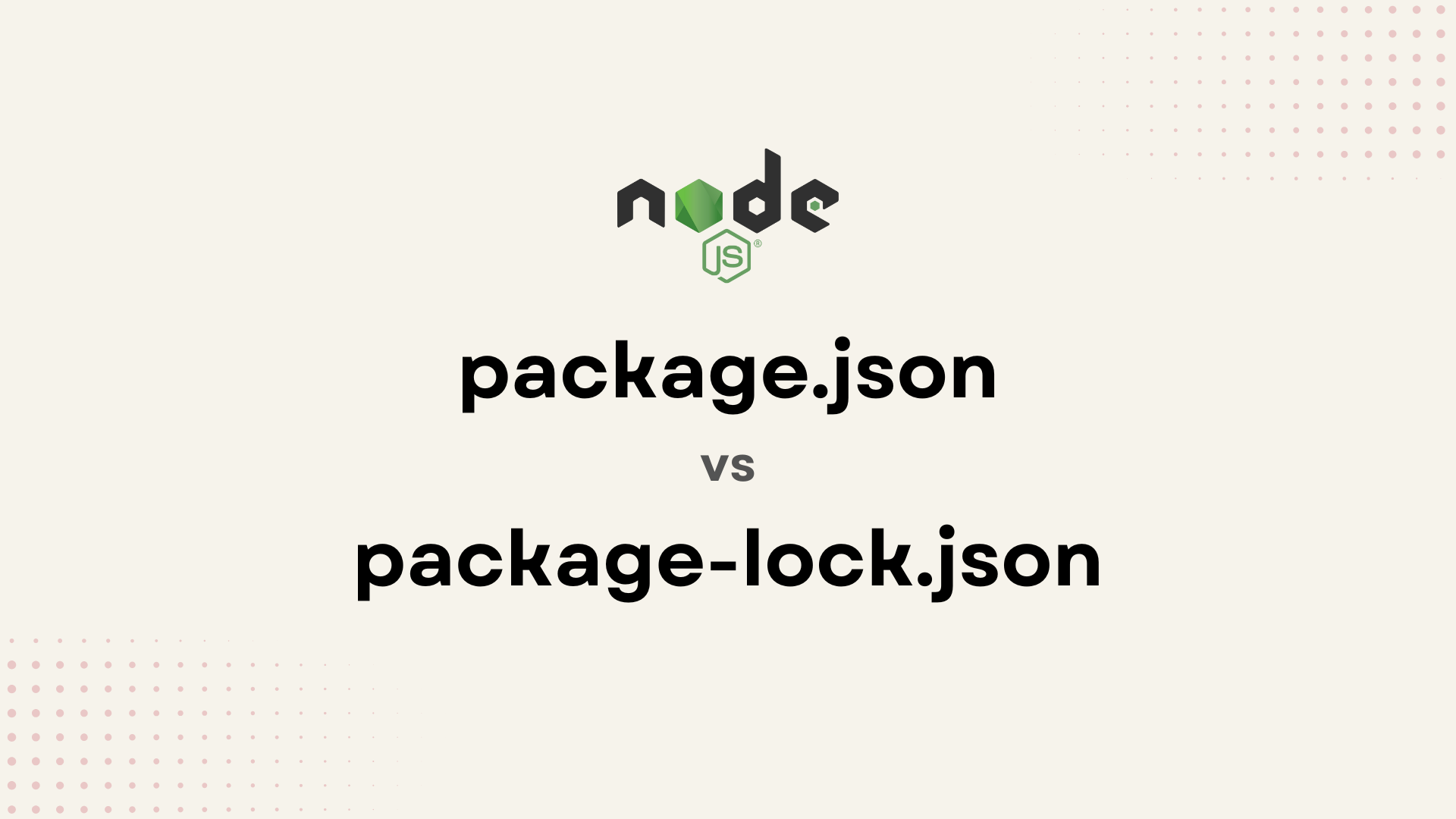
When working with Node.js and npm, two important files you'll encounter are package.json and package-lock.json. Both files play crucial roles in managing your project's dependencies, but they serve different purposes. Understanding these differences can help you maintain a more reliable and consistent development environment.
What is package.json?
The package.json file is the heart of any Node.js project. It serves as the manifest file for your application, containing essential metadata about your project. Here are some of the key elements you might find in a package.json file:
- Dependencies: Lists the packages your project depends on. Each package can have a specific version or a range of versions.
- Scripts: Defines various scripts you can run, such as
start,test, andbuild. - Version: Indicates the current version of your project.
- Metadata: Includes information such as the project name, author, license, and description.
Here's a basic example of a package.json file:
{
"name": "my-project",
"version": "1.0.0",
"description": "A simple Node.js project",
"main": "index.js",
"scripts": {
"start": "node index.js"
},
"dependencies": {
"express": "^4.17.1"
},
"author": "Your Name",
"license": "MIT"
}
The package.json file is crucial for installing dependencies. When you run npm install, npm reads the dependencies listed in this file and installs them into your node_modules directory.
What is package-lock.json?
Unlike package.json, the package-lock.json file is automatically generated by npm when you run npm install. This file records the exact versions of each installed package, including all nested dependencies. It ensures that the same versions of dependencies are installed across different environments, providing consistency and reliability.
Here's an example of a package-lock.json snippet:
{
"name": "my-project",
"version": "1.0.0",
"lockfileVersion": 1,
"requires": true,
"dependencies": {
"express": {
"version": "4.17.1",
"resolved": "<https://registry.npmjs.org/express/-/express-4.17.1.tgz>",
"integrity": "sha512-...",
"requires": {
"accepts": "~1.3.7",
...
}
},
...
}
}
The package-lock.json file ensures that anyone who installs your project will get the exact same versions of every package, down to the last nested dependency. This is especially important for avoiding "works on my machine" issues by providing a deterministic build.
Key Differences
- Purpose:
package.json: Manages metadata, scripts, and dependencies for your project.package-lock.json: Ensures consistent dependency versions across different environments.
- Generation:
package.json: Manually created and edited by developers.package-lock.json: Automatically generated by npm.
- Dependency Versions:
package.json: Lists the desired versions of dependencies.package-lock.json: Records the exact installed versions of dependencies.
- Consistency:
package.json: Allows for flexibility in dependency versions.package-lock.json: Ensures exact version consistency.
Conclusion
Both package.json and package-lock.json are essential for managing your Node.js project's dependencies. While package.json provides a high-level overview and control over your project's dependencies and scripts, package-lock.json ensures that everyone working on the project has a consistent set of dependency versions. Understanding the roles of these files can help you better manage your project's dependencies and avoid common pitfalls in collaborative development.
By leveraging both files effectively, you can maintain a stable and predictable development environment, making your project more robust and easier to manage